- EUR-LIVE
- eur-live@u-pec.fr
Published on 26 sept. 2024
We're delighted to look back on the EUR LIVE 2024 Summer School, which came to a successful conclusion after two intense days of innovation and collaboration. The event, entitled “Fertile ground for understanding vulnerability: Founding tomorrow's science of aging and senescence”, brought together scientists, researchers and clinicians from all over the world at Cyclone Le Studio, located on rue Vulpian in Paris, to explore together the advances and challenges surrounding the science of aging.
These days organized by EUR LIVE were created as part of the university diploma it awards to its students. To find out more about the course, click here.
[Save the date] Summer School 2025, 18-19 Sept

The two days were marked by rich exchanges and deep reflection on the biology of aging and cellular senescence. The aim was clear: to explore age-related vulnerabilities and foster interdisciplinary collaboration to meet tomorrow's challenges.

The program kicked off with an opening session, featuring keynote speeches such as Eric Gilson's talk on the regulation of aging by TRF2 expression, Masashi Narita's presentation on gene regulation during senescence, and Clemens Schmitt's presentation on cancer prevention through senolysis. These presentations laid the foundations for in-depth reflection on how basic research can be translated into concrete clinical applications.
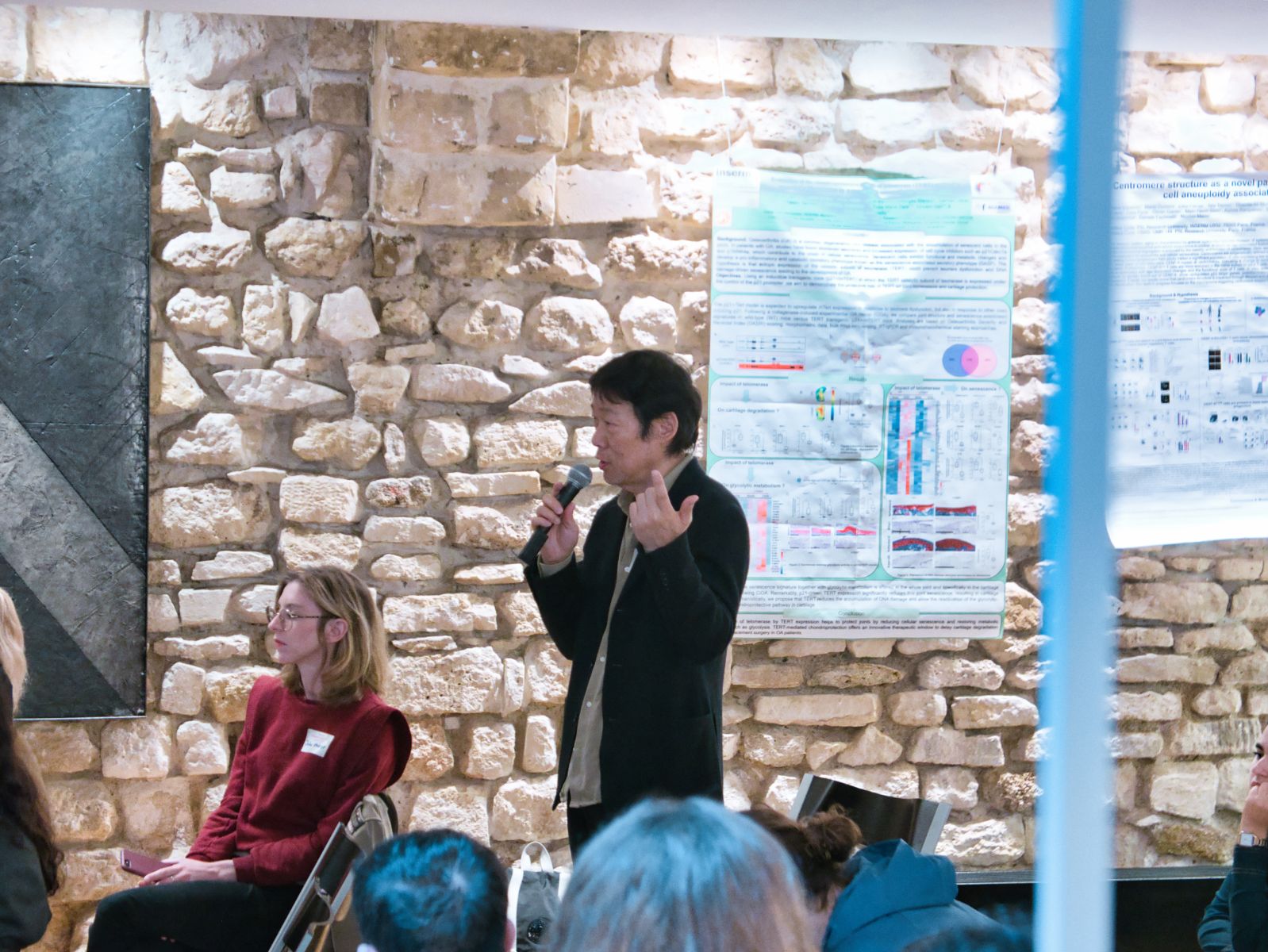
The afternoon of the first day was devoted to a round table discussion entitled “Cellular Senescence: From Lab to Bedside”, where researchers and clinicians debated preclinical and clinical models of senescence, with a particular focus on introducing the concept of senescence into medical practice. Poster sessions and flash presentations then enabled young researchers to share their work and receive feedback from experts.
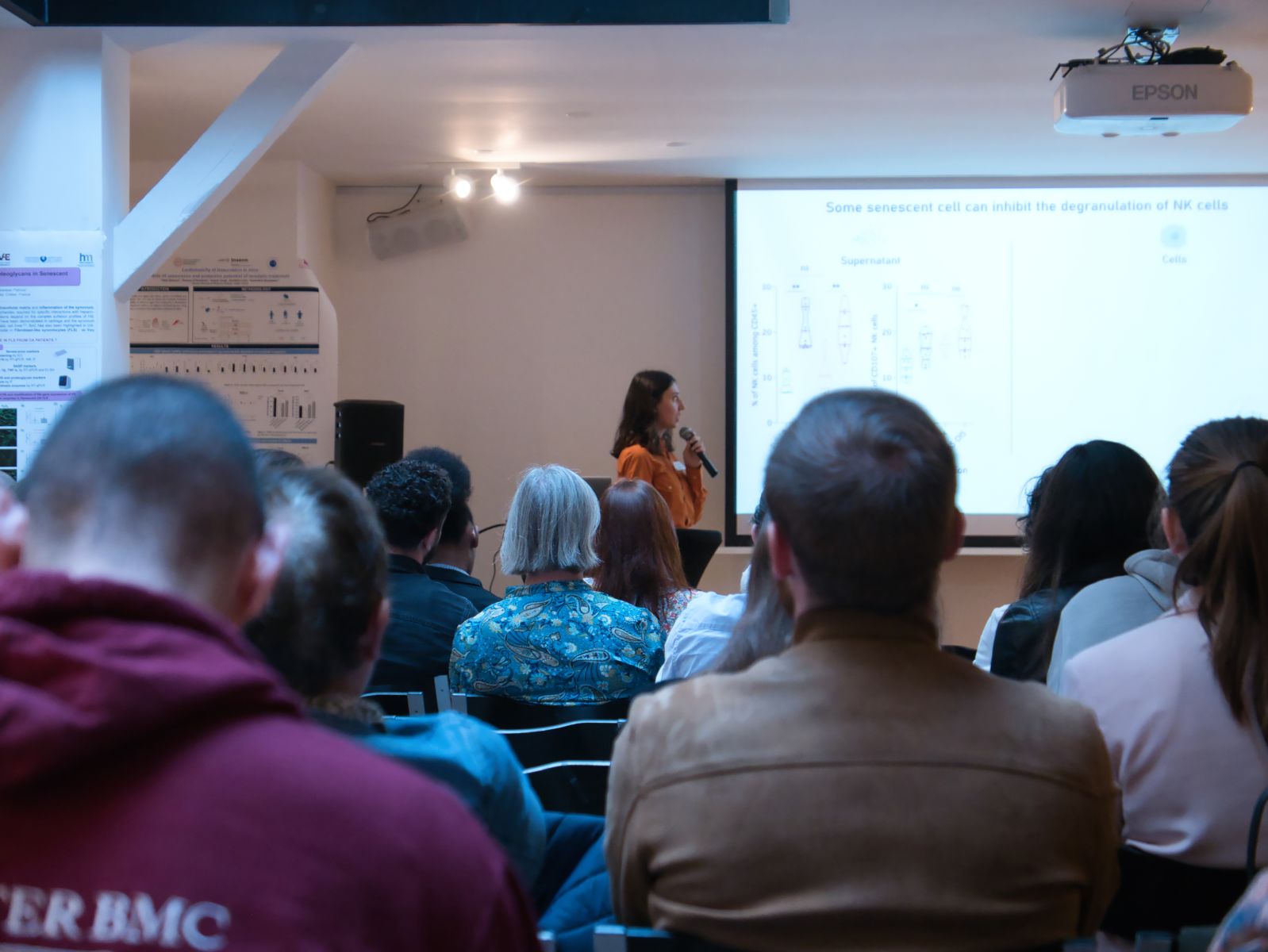
The second day continued in the same vein, with discussions focusing on therapeutic perspectives and aging mechanisms, such as Luigi Fontana's presentation on slowing biological aging through diet and exercise, or Jeanne Mialet-Perez's on signaling pathways in cardiac senescence. Fruitful exchanges took place around new ideas for future collaborations, notably during the “matchmaking” session led by Thierry Galli (INSERM) and Yvan De Launoit (CNRS), which enabled participants to connect their research.
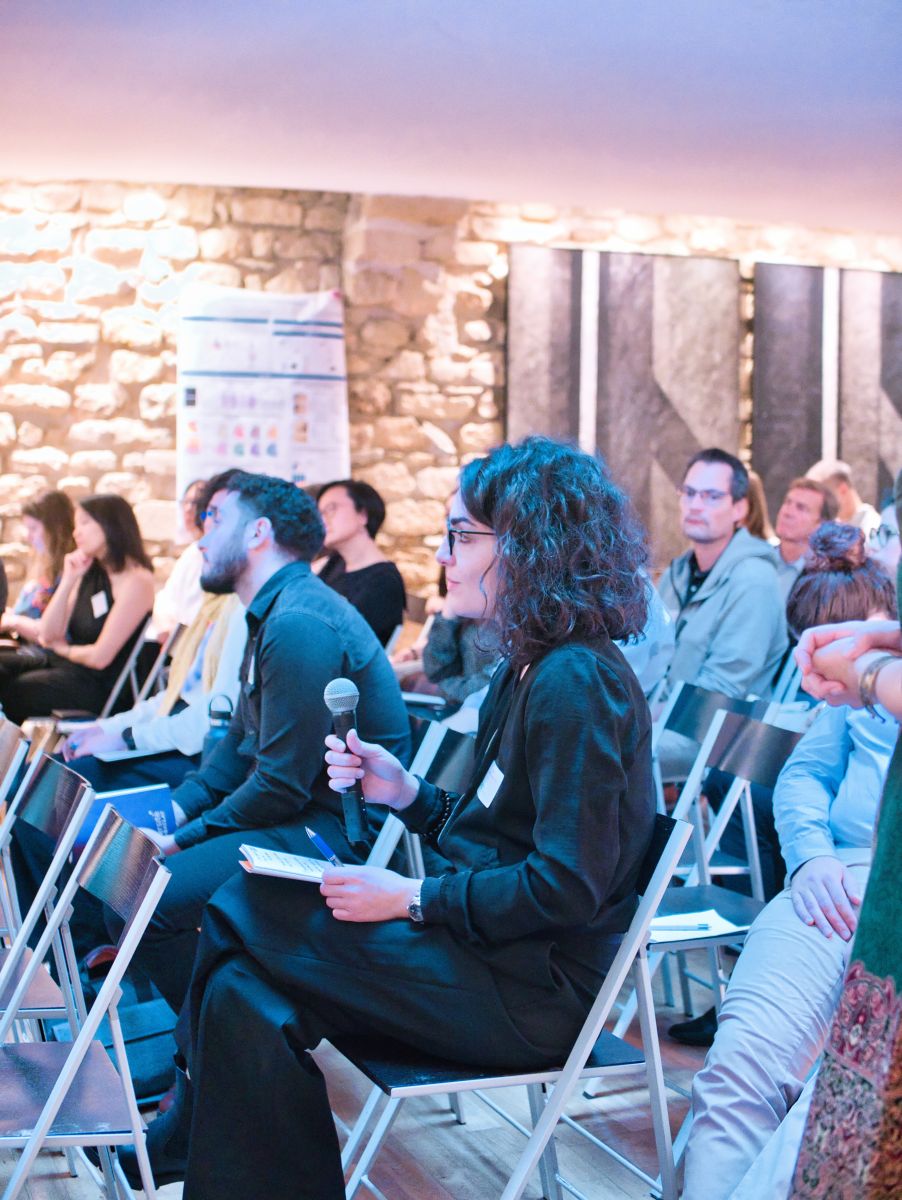
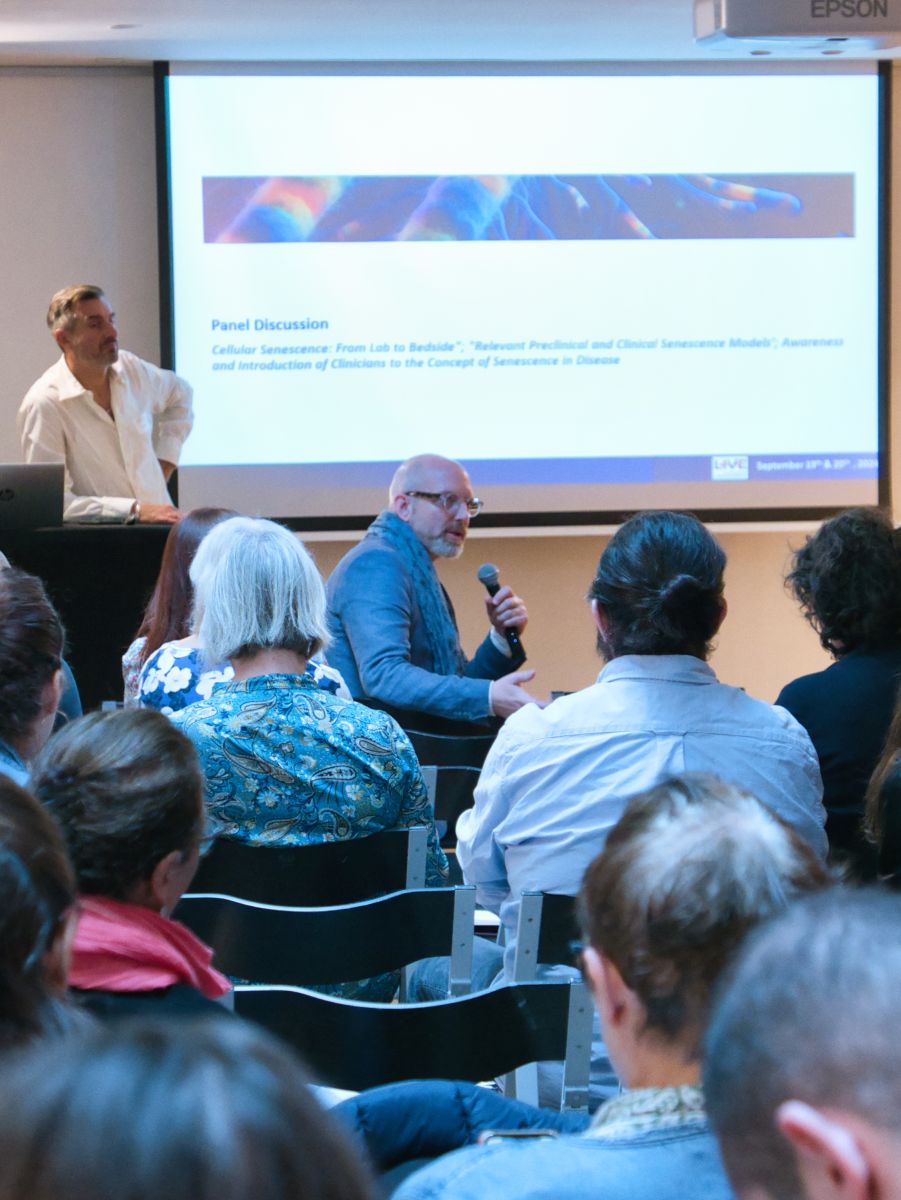
Beyond the lectures and presentations, the Summer School offered valuable networking opportunities, reinforcing the importance of this event as a true crossroads for scientific collaboration.
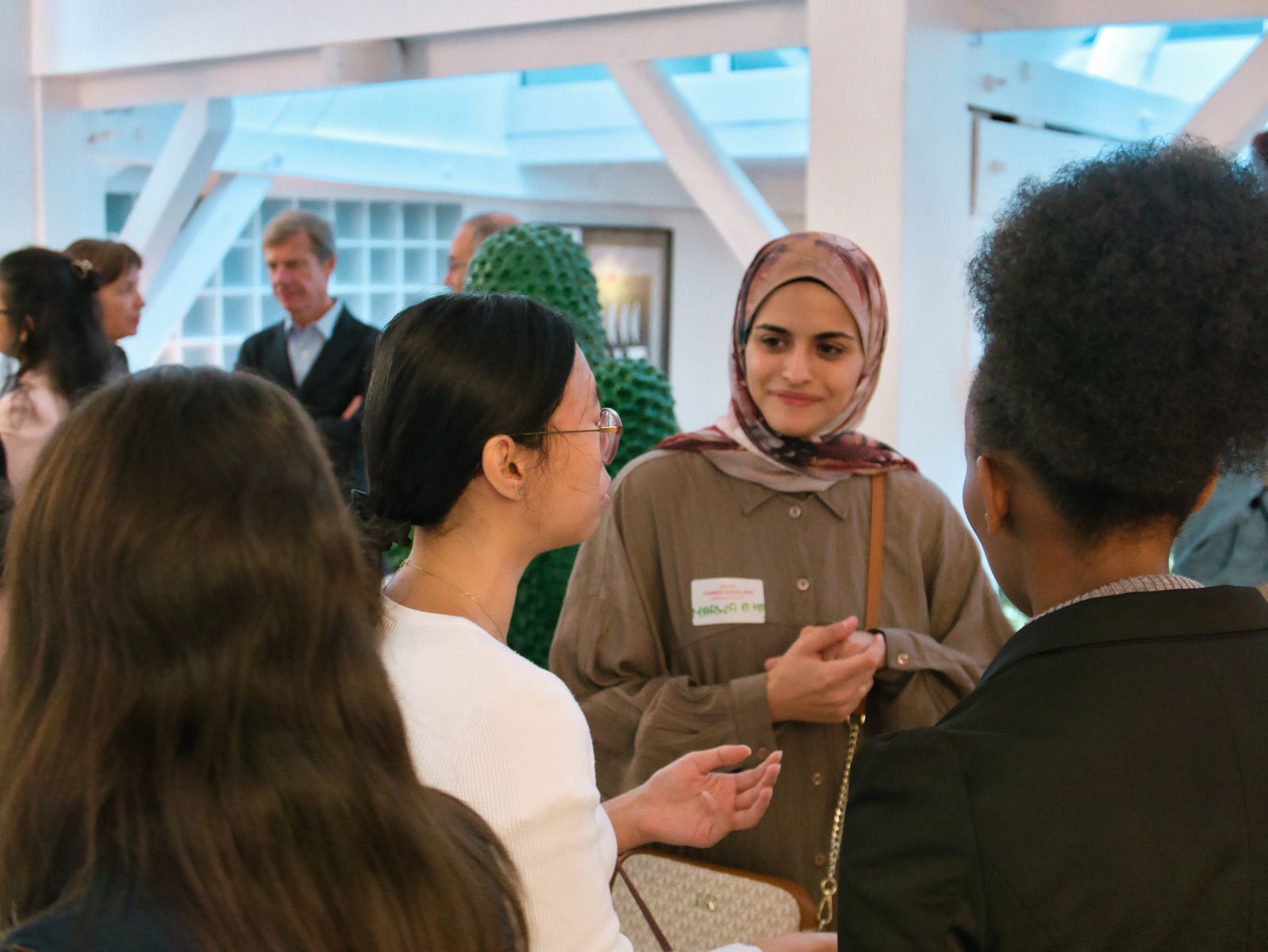
Masashi Narita
‘Senescence and Gene Regulation’
Cellular senescence is induced by various stimuli, with characteristic morphological changes and sustained proliferative arrest. The adverse effects of senescence are often attributed to cells losing their natural functions. However, the aspect of cells gaining new functions is also critical. Cellular function is largely defined by tissue-specific gene expression patterns, representing cellular diversity. This is closely associated with 3D epigenetic configuration. I will discuss senescence as a dynamic process of functional identity shift, introducing the concept of the senescence spectrum.
Clemens Schmitt
‘Cancer Prevention through Senolysis’
Mutation-activated Ras/Braf-type oncogenes are frequently found in a broad variety of cancer types. Paradoxically, their activation in primary cells provokes senescence (i.e. oncogene-induced senescence [OIS]) in preneoplastic lesions (e.g. melanocytic nevi), implying that those precursors may occasionally escape from OIS to advance to full-blown malignancies (e.g. to malignant melanoma). Hence, elimination of OIS cells should interrupt post-senescent tumor formation. Based on a drug screen conducted together with medicinal chemists, we identified a compound with pan-senolytic activity that effectively reduces Ras/Braf-driven tumor formation by targeting incipient OIS precursor lesions.
Björn Schumacher[1]
‘A DREAM Master Regulator of Genome Stability and Aging by the Clock yet without a Program’
Aging is an inherent property of somatic tissues, while germ cells indefinitely perpetuate the genetic information. Consequently, germline genomes could be indefinitely maintained, while somatic genomes only have limited genome maintenance capacities. Using the C. elegans model, we identified the DREAM repressor as master regulator that limits the expression of DNA repair genes in the soma. DREAM mutants showed elevated DNA repair gene expression, augmented DNA repair and resistance to distinct types of DNA damage. The DREAM regulation of DNA repair is highly conserved from nematodes to humans. Pharmacological inhibition of DREAM in vivo could reduce DNA damage accumulation and retinal degeneration in a progeroid mouse model. We propose that DREAM targeting could provide a novel therapeutic avenue for delaying age-related degeneration and lower cancer risk by conferring germline-like DNA repair capacities to the soma.
Consistent with the causal role of DNA damage in aging, we found that accumulation of stochastic variation is sufficient for predicting chronological and biological age. We determined that an age predictor that is solely built on noise accumulation could predict age across mammalian, and species acceleration and deceleration in human smoker and calorie restricted mice, respectively, as well as age reversal upon cellular reprogramming. Our data indicate that the accuracy of aging clocks is compatible with the evolutionary theory of aging that suggests an increasing loss of regulation resulting in accumulation of stochastic variation in biological parameters to underlie the aging process.
Ilke Sen
‘New Players Regulating Metabolism and Skeletal Muscle Function during Aging and Age-Related Diseases’
Aging is an inevitable, complex biological process bringing alone several age-related diseases including type 2 diabetes (T2D). Skeletal muscle is one of the most affected tissues during this process and it undergoes significant morphological and physiological changes, resulting in loss of mass, strength, and function, a pathological condition called sarcopenia. During my presentation I will talk about a novel lncRNA that is downregulated in T2D, which is required for the maintenance of skeletal muscle mass through the regulation of ribosomal biogenesis. I will also touch upon the strategies of our lab for the discovery of new targets to counteract age-related decline in skeletal muscle mass and function.
Khaled Tighanimine
Targeting senescence metabolic vulnerabilities: Glycerol-3-phosphate and Phosphoethanolamine trigger senescence by rewiring lipid metabolism.
Cellular senescence affects many physiological and pathological processes and is characterized by durable cell cycle arrest, an inflammatory secretory phenotype and metabolic reprogramming. Hence, finding common and specific metabolic signatures in senescence could provide targetable vulnerabilities to alleviate senescence burden in the organism. In this lecture, we focused on recent discoveries on metabolic adaptations of senescent cells that resulted from an important collaboration within the AGEMed consortium between Eric Gilson’s, Oliver Bischof’s and Mario Pende’s teams. We used dynamic transcriptome and metabolome profiling in different subtypes of senescence, and showed that a homoeostatic switch that results in glycerol-3-phosphate (G3P) and phosphoethanolamine (pEtN) accumulation links lipid metabolism to the senescence gene expression program. Mechanistically, p53-dependent glycerol kinase activation and post-translational inactivation of phosphate cytidylyltransferase 2, ethanolamine regulate this metabolic switch, which promotes triglyceride accumulation in lipid droplets and induces the senescence gene expression program. Conversely, G3P phosphatase and ethanolamine-phosphate phospho-lyase-based scavenging of G3P and pEtN acts in a senomorphic way by reducing G3P and pEtN accumulation. Collectively, this study ties G3P and pEtN accumulation to controlling lipid droplet biogenesis and phospholipid flux in senescent cells, providing a potential therapeutic avenue for targeting senescence and related pathophysiologies. These findings have been recently published in Nature Metabolism journal1.
José Freitas
‘Systems Biology and Multilayer Profiling: Towards Comprehensive Understanding of Cellular Aging and Its Potential Exploitation’
Cellular senescence (CS) is a complex cellular stress response associated with various age-related diseases, such as diabetes, cancer, and Alzheimer's disease. The phenotypic shift of cells undergoing senescence results from profound and dynamic changes in the epigenetic, transcriptomic, and metabolic landscape. We are currently developing a mathematical model that mimics the transcriptome evolution of senescent cells in order to understand the gene regulatory network that implements changes in the cell's state and identity. Ultimately, our research aims to provide a quantitative description of cellular senescence dynamics to facilitate the identification of actionable targets that have therapeutic potential to reverse or reduce the detrimental impact of senescent cells on aging and age-related diseases to promote healthspan.
Jane Reznick
‘Retention of fetal traits in adult naked mole-rat heart’
The naked mole-rat, a long-lived cancer resistant rodent has various retained neotenous traits as an adult and we show that the heart in particular has preserved various features associated with developing and/or neotenous myocardium. These include a fetal-like metabolism favouring glucose to fatty acids, alternate mitochondrial dynamics and immature mitochondrial morphology, neonatal myofilament isoforms and mononucleation. Functionally, retention of developmental programmes allow naked mole-rats to counteract stress associated with their environment, including protection against ischaemia/reperfusion. Although usually adult mammalian myocardium cannot regenerate lost tissue post-injury, we show that retained neonatal features in the naked mole-rat heart permit cardiomyocytes to re-enter cell cycle, invade the injured zone to re-instate cardiac structure and function post-injury.
Luigi Fontana
‘Slowing Biological Aging Through Diet and Exercise: Metabolic and Molecular Mechanisms’
Dietary restriction without malnutrition remains the most robust non-genetic intervention to date that can maximize lifespan and healthspan in model organisms.1 It also safeguards against obesity, cancer, neurodegeneration, frailty, and a range of cardiometabolic and inflammatory conditions in rhesus monkeys; and in humans, it promotes adaptations that protect against these pathologies and may even slow the accumulation of age-related damage..2 In this lecture, I will discuss the effects of different forms of dietary restriction in mammalian model organisms, and the accumulating data indicating that dietary restriction with adequate nutrient intake results in many of the same physiological, metabolic and molecular changes responsible for the prevention of multiple age-associated diseases in humans, especially when combined with other lifestyle interventions.3
This is important because most of the research priorities and spending for health are focused on finding new molecular targets and pharmaceutical products for treating diseases after they have occurred. Very little is invested in mechanism-based preventive science, medicine, and education. The problem is that this overly enthusiastic expectations regarding the benefits of pharmacological research for disease treatment have the potential to impact and distort not only medical research and practice but also environmental health and sustainable economic growth.4 To address these challenges, we must transition from a predominantly disease-centric healthcare model to one that emphasizes prevention, personalized care, and ‘chronic health.’ This approach will help reduce health disparities, create a financially sustainable universal healthcare system, and protect the well-being of both people and the planet.5
Key references:
Jeanne Mialet-Perez:
‘Identification of New Signaling Pathways Driving Senescence in the Heart’
Our work is dedicated to understand the molecular and cellular mechanisms involved age-associated cardiac diseases. For this purpose, we study specific signalling pathways related to reactive oxygen species (ROS), Ca2+ signalling, mitochondrial dysfunction and their involvement in senescence and cardiac aging. In particular, we have uncovered the major role of telomere damage and mitochondrial ROS in cardiomyocyte senescence (Embo J 2019). We have also demonstrated that removal of senescent cells in the aging heart alleviated hypertrophy and fibrosis. We are now uncovering novel signaling pathways driving senescence in the heart that could be targeted to improve cardiac function in aging.
Stefano Raviola
The interplay between cytomegalovirus-induced senescence, paracrine signaling, and microenvironment dynamics
Teaser :
This flash presentation will explore the effects of renal proximal tubular epithelial cells on cellular senescence as a result of human Cytomegalovirus (HCMV) infection. We will examine intriguing new evidence that suggests HCMV may activate IL-6 to cause paracrine senescence, perhaps providing fresh insight into how the virus affects tissue health and cellular aging.
Abstract
S. Garagnania,b, S. Raviolaa,b, V. Caneparoa, F. Castiglionia, S. Pasqueroc, M. Gariglioa,b, M. De Andreaa,c
a Intrinsic Immunity Unit, CAAD - Center for Translational Research on Autoimmune and Allergic Disease, University of Eastern Piedmont, Novara, Italy
b Molecular Virology Unit, Department of Translational Medicine, University of Eastern Piedmont, Novara, Italy
c Viral Pathogenesis Unit, Department of Public Health and Pediatric Sciences, Turin, Italy
Human cytomegalovirus (HCMV) is an opportunistic pathogen causing severe diseases in immunosuppressed individuals, such as transplant recipients and AIDS patients. To enable replication of its long double-stranded DNA genome, HCMV induces profound changes in cellular homeostasis that may resemble senescence. Senescent cells produce and secrete a complex combination of factors, collectively referred to as the senescence-associated secretory phenotype (SASP), that mediate most of their immune-modulatory effects along with the induction of paracrine senescence. Here, by using renal proximal tubular epithelial cells (RPTECs), a natural setting of HCMV infection and disease, we have experimentally demonstrated that RPTECs fully support HCMV replication and undergo a senescence program upon infection that triggers a harmful secretory phenotype with the ensuing induction of paracrine senescence in uninfected surrounding cells, mainly driven by IL-6. When the IL-6R inhibitor tocilizumab (TCZ) was added in the course of infection, a dramatic decrease in the total number of cells expressing nuclear NF-kB and the DNA-damage marker gamma-H2AX was observed, mainly in the bystander uninfected cells. Of note, this paracrine senescence is not observed in fibroblasts and other non-renal epithelial cells (e.g., retina-derived), suggesting that its specific impact varies by cellular context.
Emerging evidence also indicates that CMV infection of endothelial cells (ECs) contributes to hyperinflammation and vascular diseases. In this context, we have infected human umbilical vein endothelial cells (HUVECs) to assess whether virus-induced senescence (VIS) or paracrine senescence could be observed. The results so far obtained indicate that some markers of VIS, e.g. EdU incorporation and p16INK4a protein expression are significantly modified upon infection. A remarkable increase of the IL-6 levels released in the culture supernatants has also been observed starting from 3 dpi that picked at 8 dpi, along with the well-known marker of senescence IL-8. As observed with RPTECs, when fresh HUVECs were treated with HCMV or mock UVB-treated supernatants, EdU incorporation significantly dropped in cells treated with HCMV conditioned medium when compared to cells treated with the one from mock-infected cells, suggesting the occurrence of a senescent paracrine phenotype. Altogether, these findings indicate that HCMV VIS differs among cell types, shaping disease progression and organ-specific outcomes.
[1] Institute for Genome Stability in Aging and Disease, Medical Faculty, Cologne Excellence Cluster for Cellular Stress Responses in Ageing-Associated Diseases (CECAD) Research Centre and Centre for Molecular Medicine (CMMC), University of Cologne, Joseph-Stelzmann-Str. 26, 50931 Cologne, Germany
Morning Session: Understanding Senescence Mechanisms
Chairperson : Oliver Bischof
Chairperson : Eric Gilson
Afternoon Sessions: Clinical Applications and Translational Research
Morning Session: Disease Perspectives
Afternoon Sessions - Collaboration and Future Directions

Update 31 oct. 2023